Slippers¶
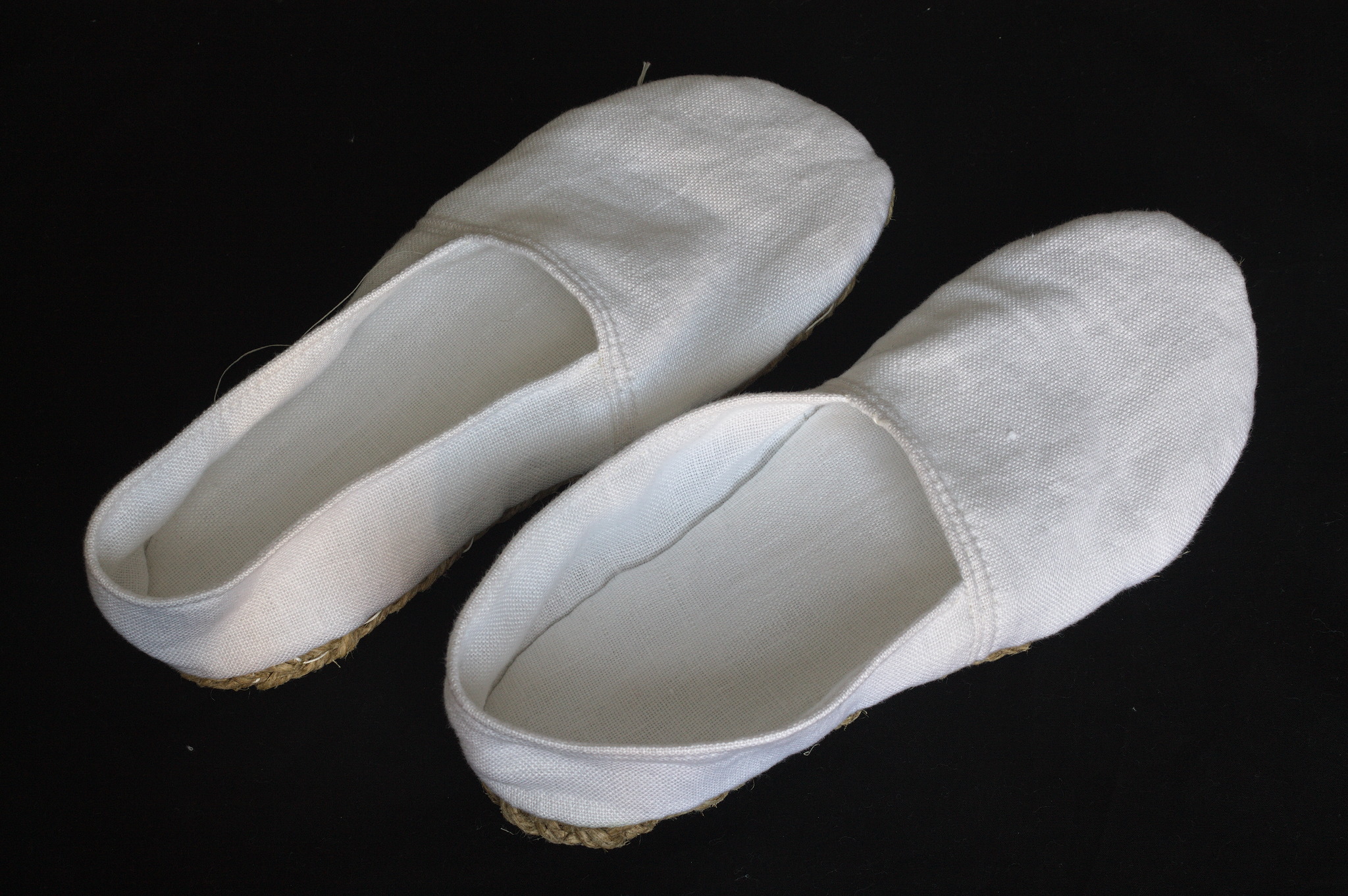
A simple pair of fabric slippers with a padded sole.
Depending on the materials used, especially that of the sole, these can be suitable for either indoors or outdoors wear.
As a small project with fiddly curves they are especially suitable for handsewing, but can of course also be sewn almost completely by machine.
Materials¶
Fabric¶
~25 cm canvas or other fabric;
~25 cm cotton batting or other padding material (optional).
As the fabric, cotton or linen canvas is a pretty standard choice; toweling materials can also be used, or fleece for a pair of winter slippers.
For a more technical look, you can use mesh for the uppers and back; in that case the sole lining will have to be different, a fast drying but confortable material like polycotton is a good choice.
For padding, cotton batting or even a few layers of scrap fabric are a good fit for fabric slippers; for technical ones you can use EVA foam or a similar material.
Notions¶
sewing thread to match the fabric;
strong thread (e.g. thick waxed linen) to attach the soles to the slippers;
1-3 m cotton yarn for cording;
two soles or sole material that can be cut in the shape provided.
My fiber craft patterns site has instructions for braided twine soles that can be used for fabric slippers.
For technical slippers you can use rubber sole sold in sheet; note that in that case the padding material will have to be suitable for glueing the sole to it.
Pattern¶
Download the pattern: slipper.val.
Measurements¶
You need to take the following measurements:
foot_width(E01)at the widest part of the foot;
foot_lenght(E03)from the back of the heel to the tip of the toes;
foot_circ(E03)around the widest part of the foot.
The file foot.vit has the required measurements.
Pattern¶
upper_lengthfrom the point of the toe to the end of the uppers: default is half the length of the foot;
back_heightheight of the heel guard at the back;
sides_heightheight of the heel guard at the sides’
sewing_allowancebasic sewing allowance: 1 cm is a good choice, but if you’re using thicker padding materials or more heel layers you may have to increase it to 2 cm to be able to wrap it around.
Instructions¶
Cutting¶
Cut two soles and optionally two or more heels (depending on the height desired) from padding material.
From the fabric cut two soles, two uppers and two backs, the latter two by placing the small sewing allowance on a fold of the fabric; for even more precision cut a longer piece of fabric, sew the cording and then cut away the eccess with more precision.
Note that the allowance given is for one line of cording and needs to be increased if you want to add more.
Cording¶
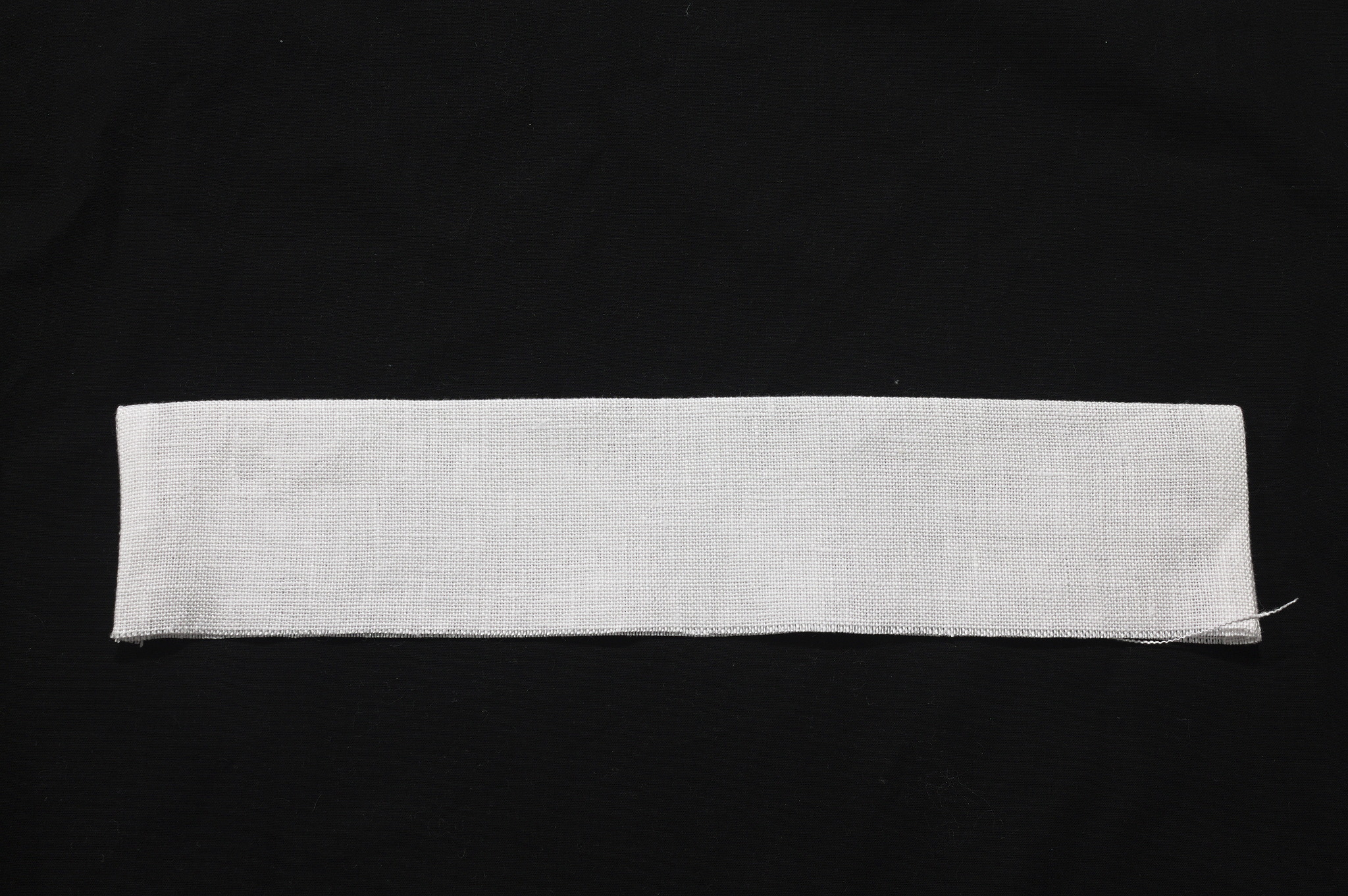
This picture was taken from an early pair of slippers with a straight back, sorry. New pictures will be taken if I make another pair with the current pattern.¶
Fold the back right sides together, sew the short side seams, clip the corners and turn inside out.
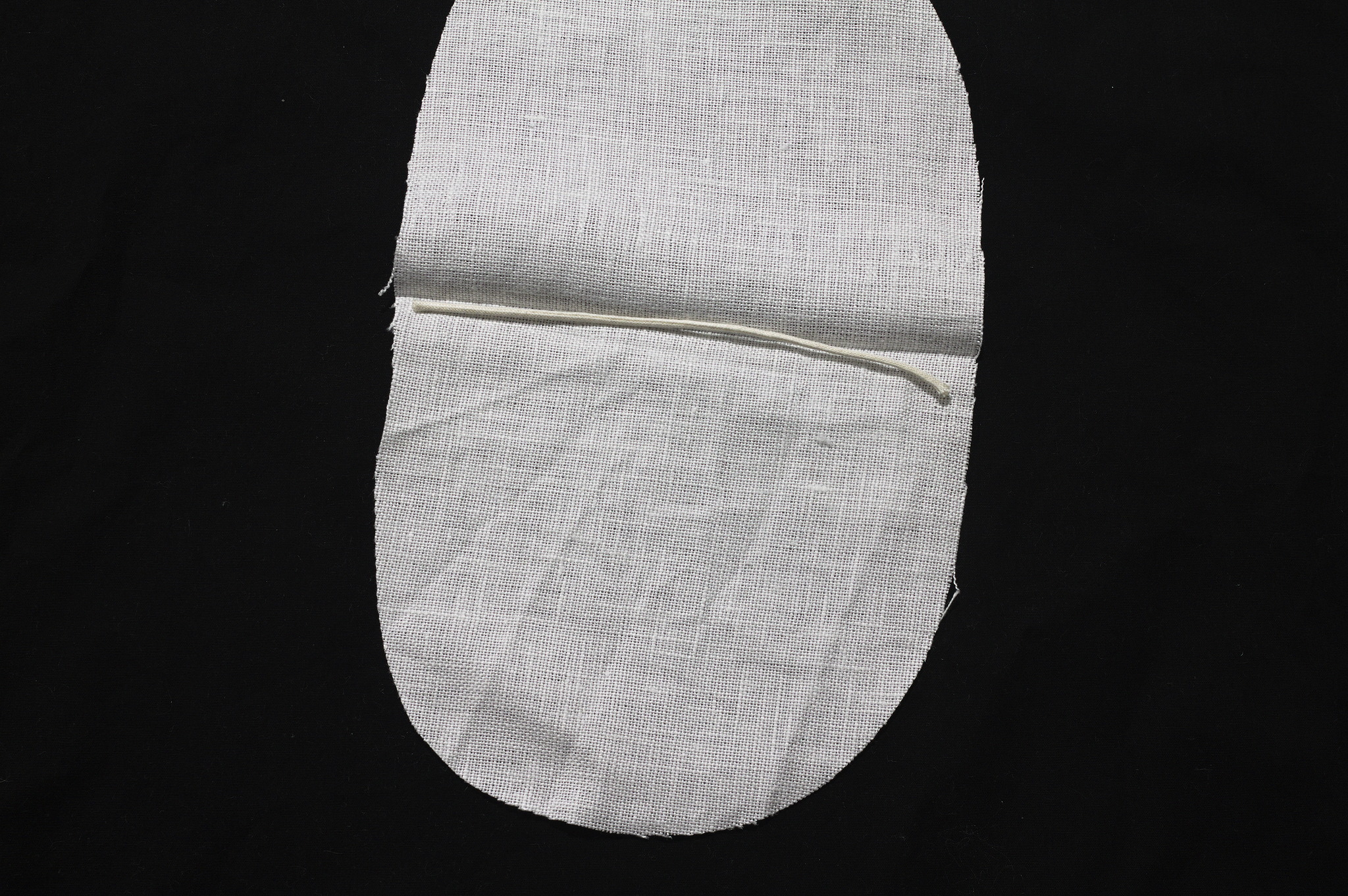
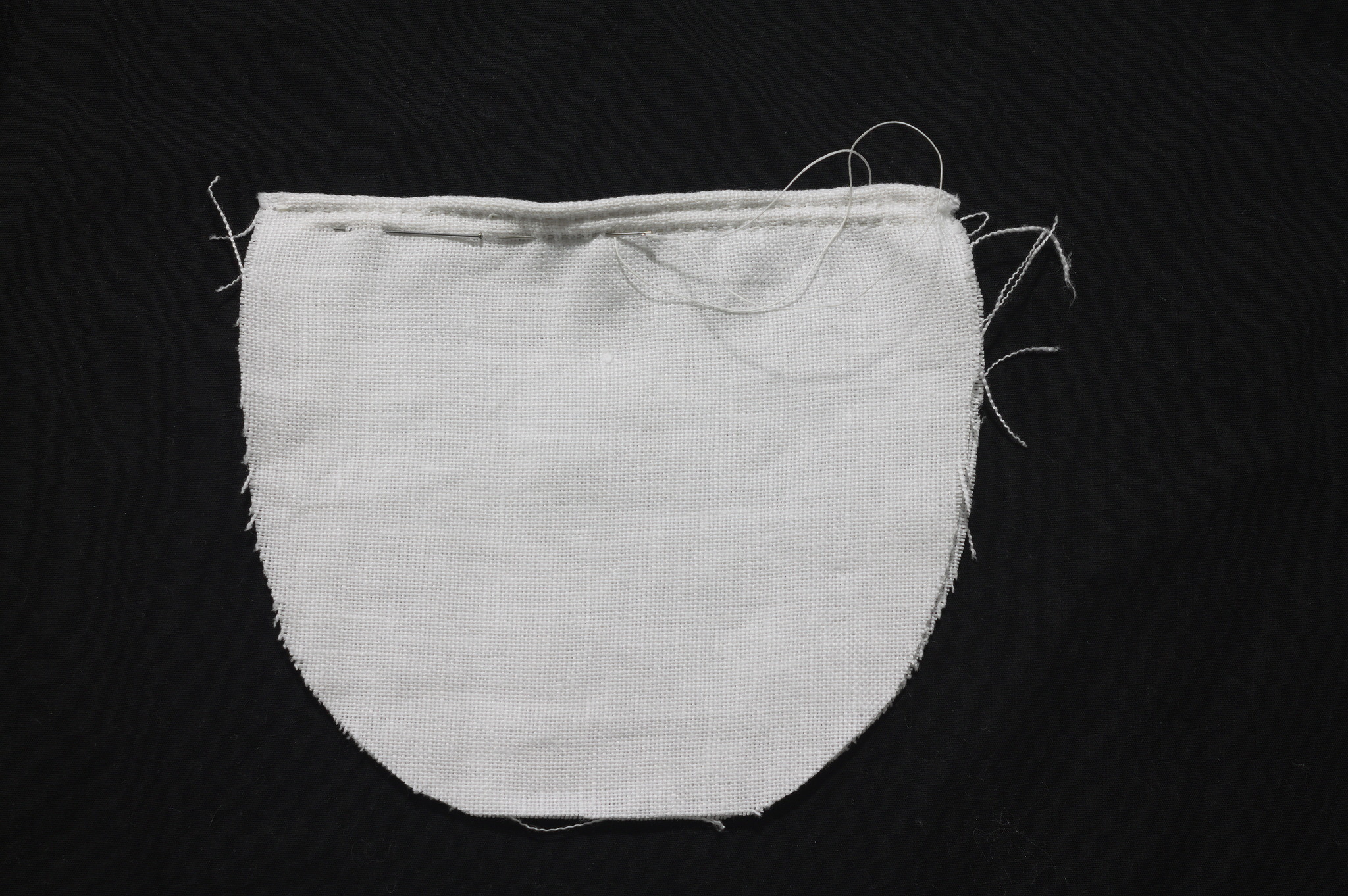
Put a lenght of cording in the fold of the uppers, carefully sew as close as possible to the cording with a running stitch; optionally repeat with two or three total lines of cording.
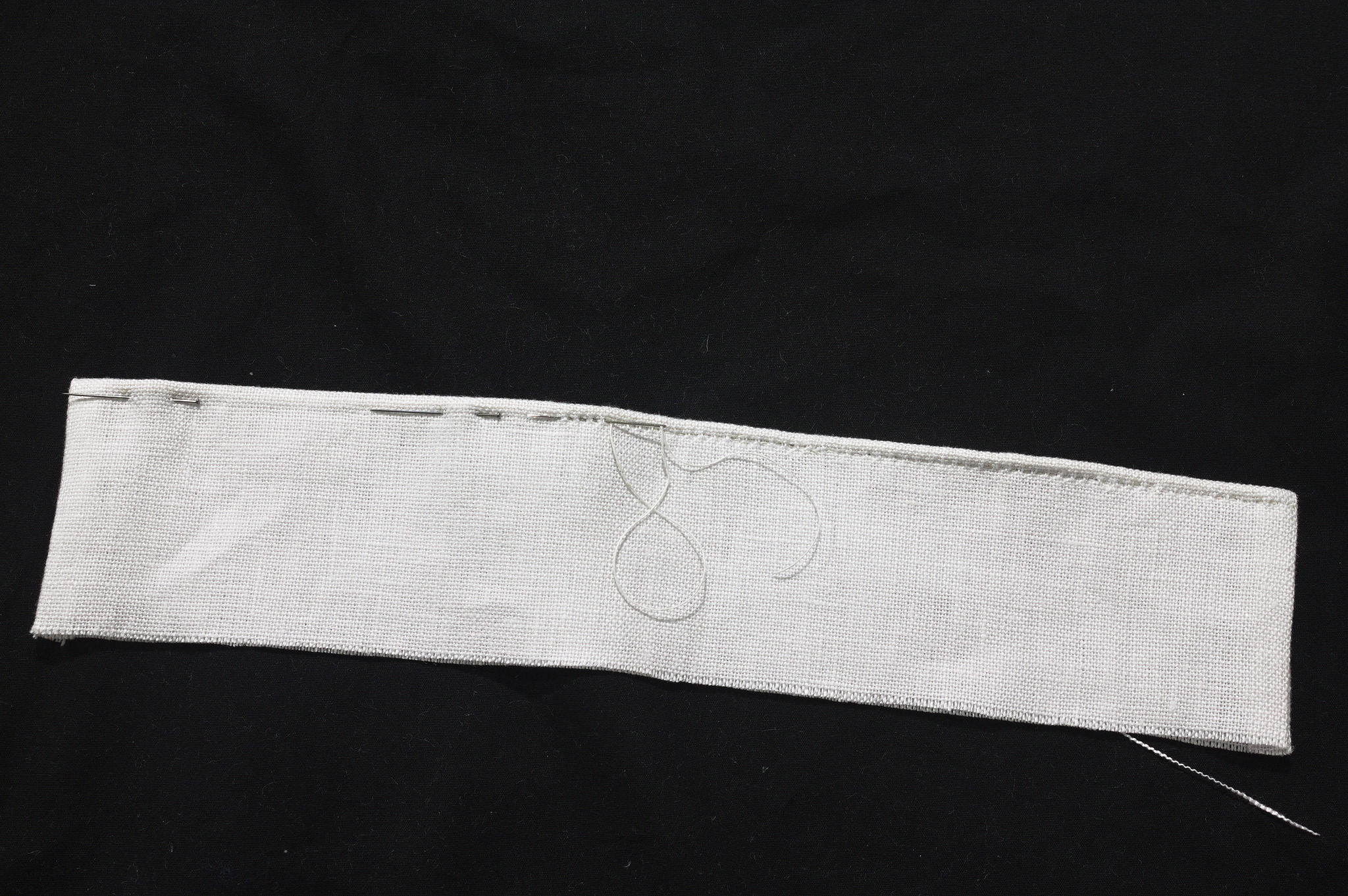
Put a length of cording in the fold of the back so that it fills the top snugly, carefully sew as close as possible to the cording with a running stitch. Here one line of cording is usually enough.
Tip
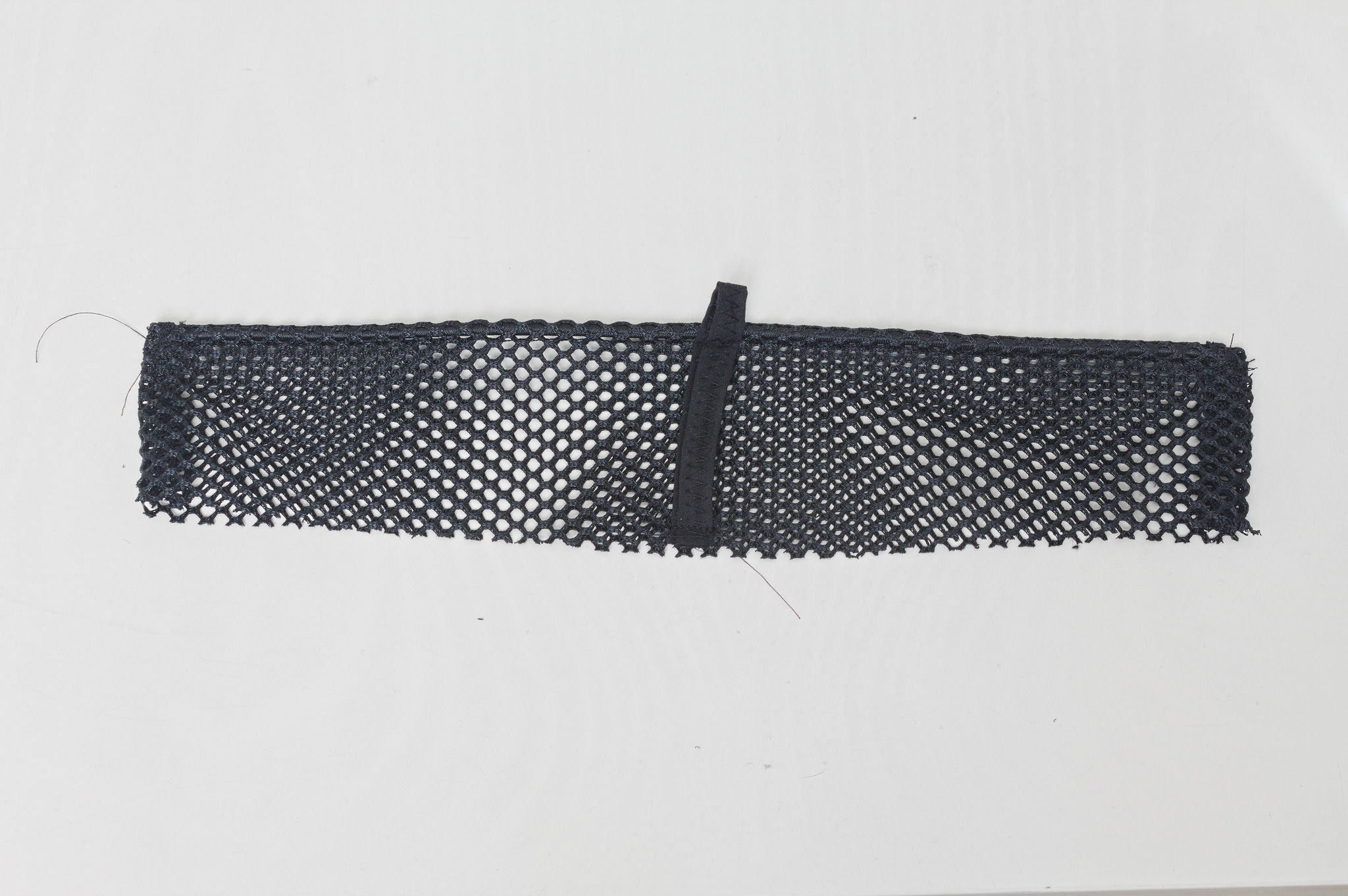
If you want you can add a loop to the back to be able to hang the slippers; cut some narrow tape twice as high as the center of the back (including allowances) plus 2-3 cm, fold it in half and sew it while cording the back, as well as to the allowances.
Uppers and Backs¶
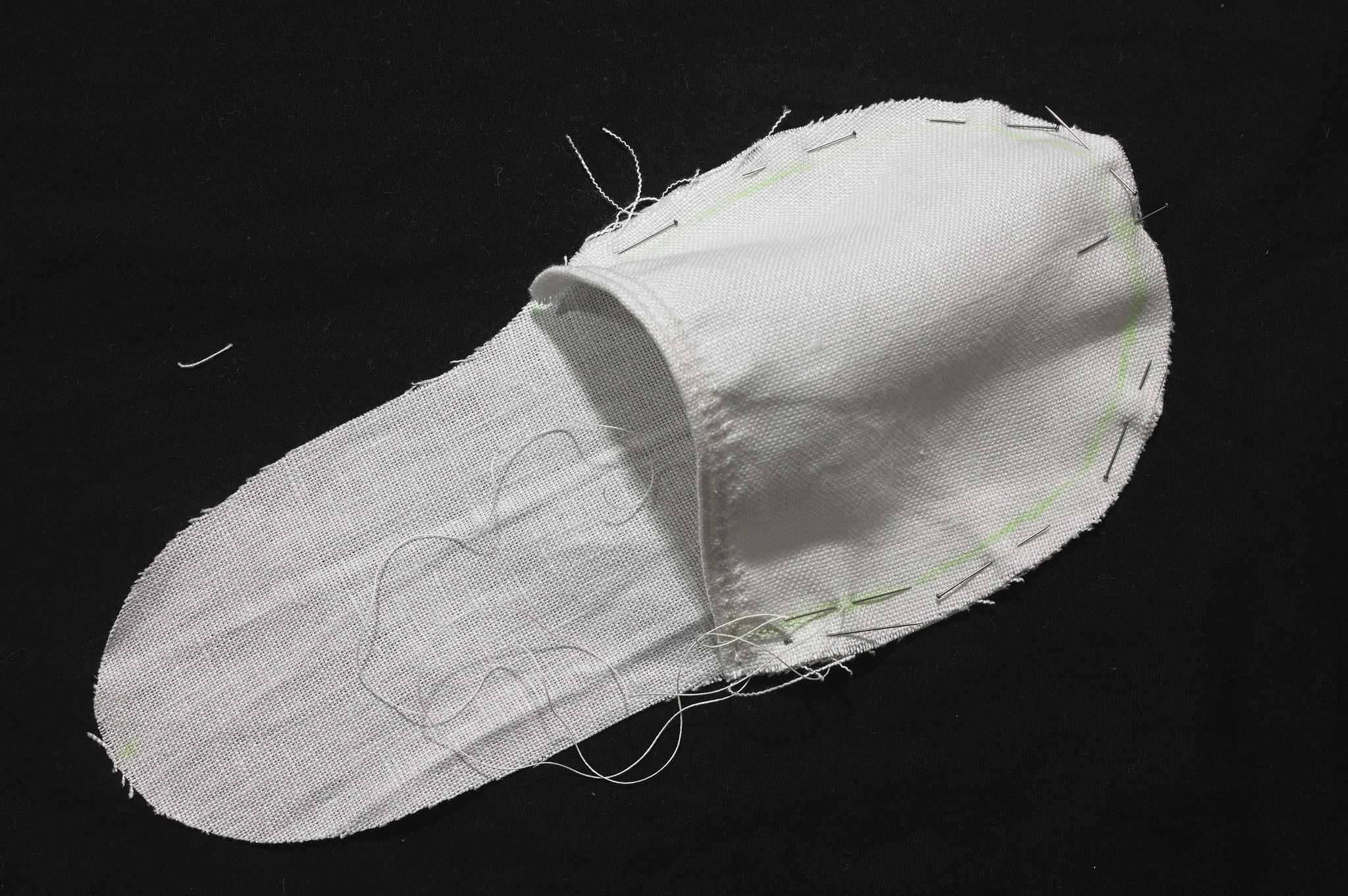
Align the uppers to the notches of the sole, sew all around the upper with a backstitch.
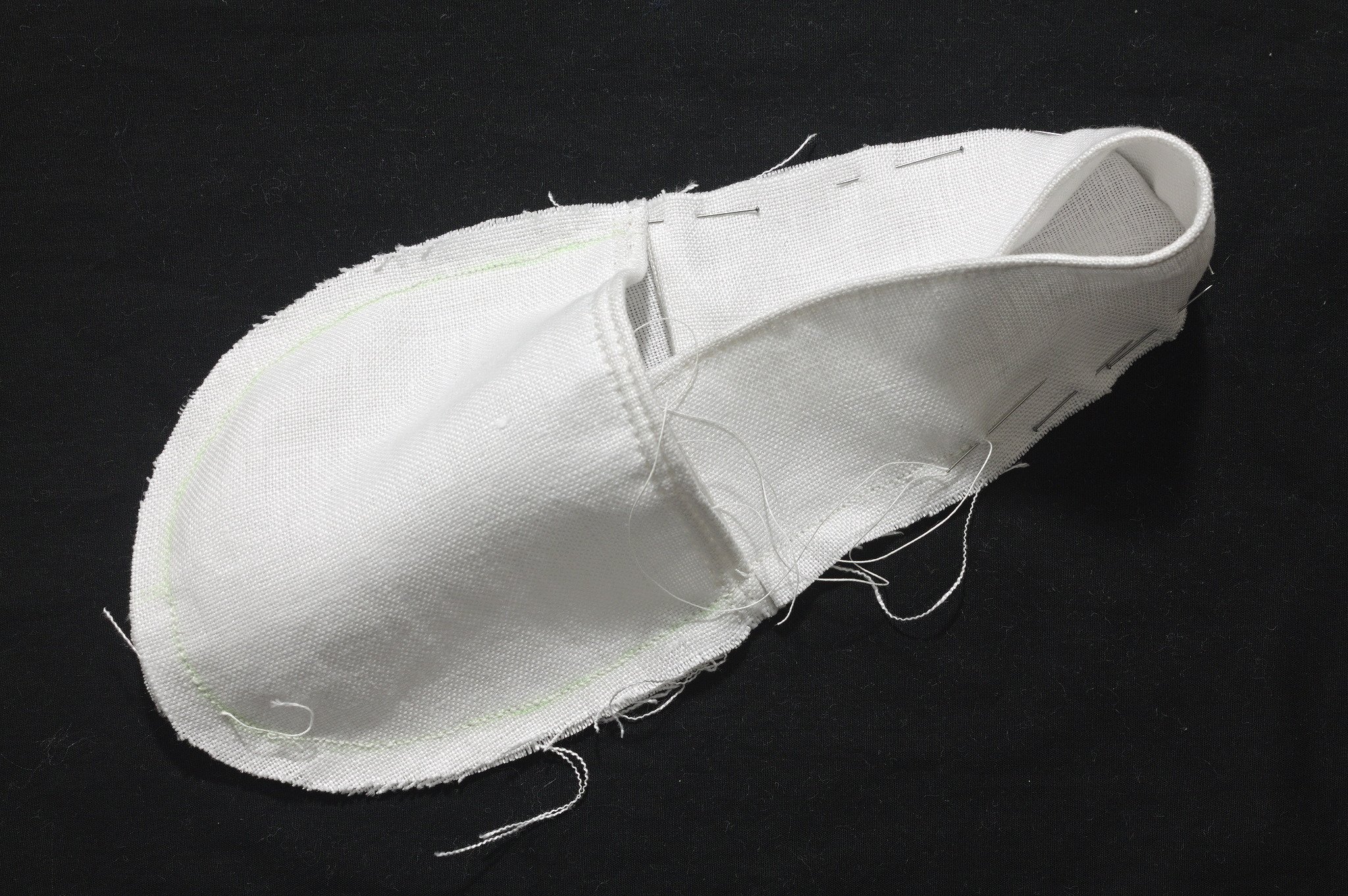
Also align the backs to the remaining part of the sole, sew all around with a backstitch.
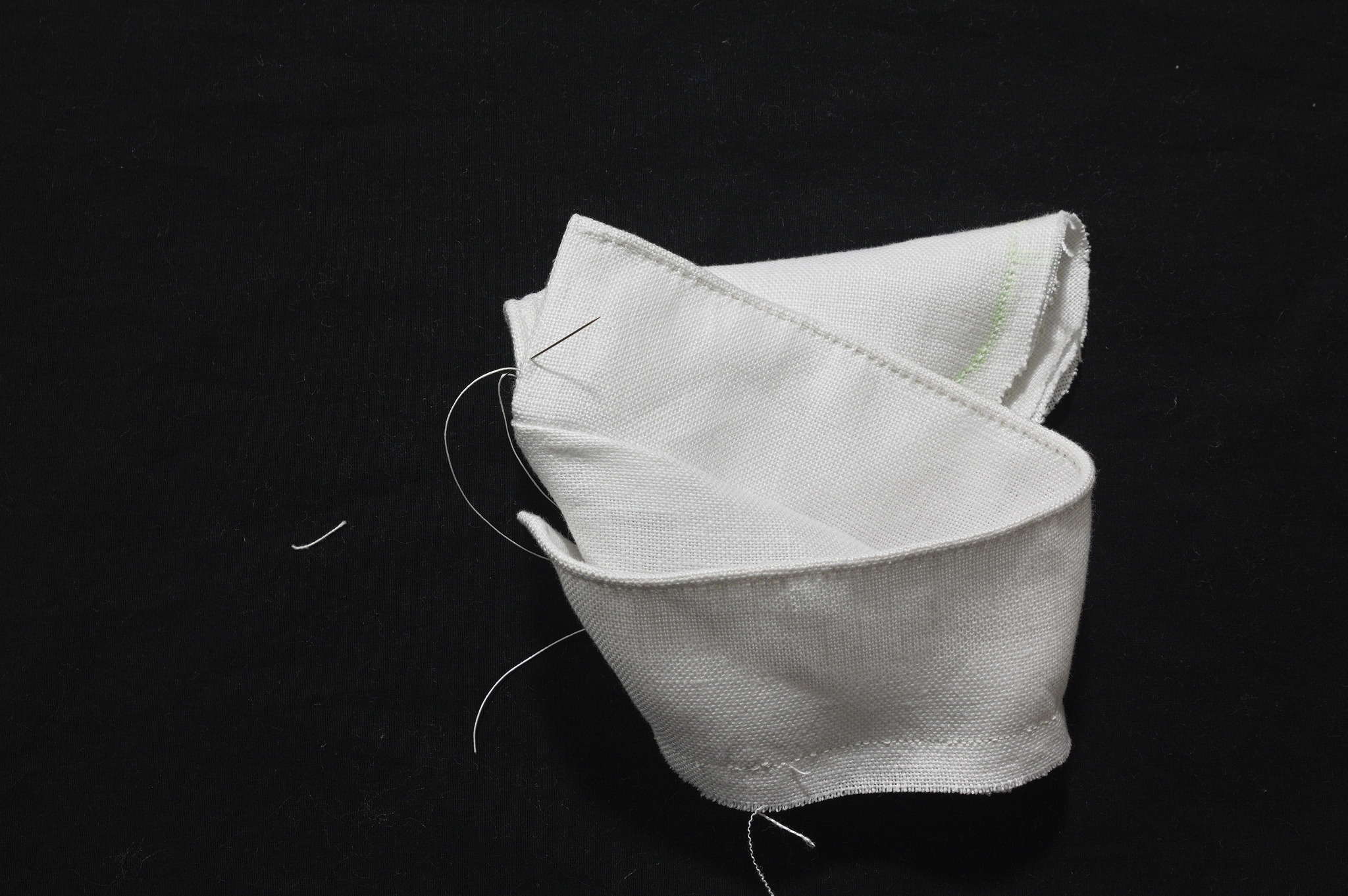
Right sides together, whipstitch the side edges of the back to the fold of the uppers.
Note
if sewing by machine, align the sides of the back to the fold of the uppers, side by side, and sew from the top with a zig-zag.
Padding¶
Baste the optional heel padding on top of the padding.
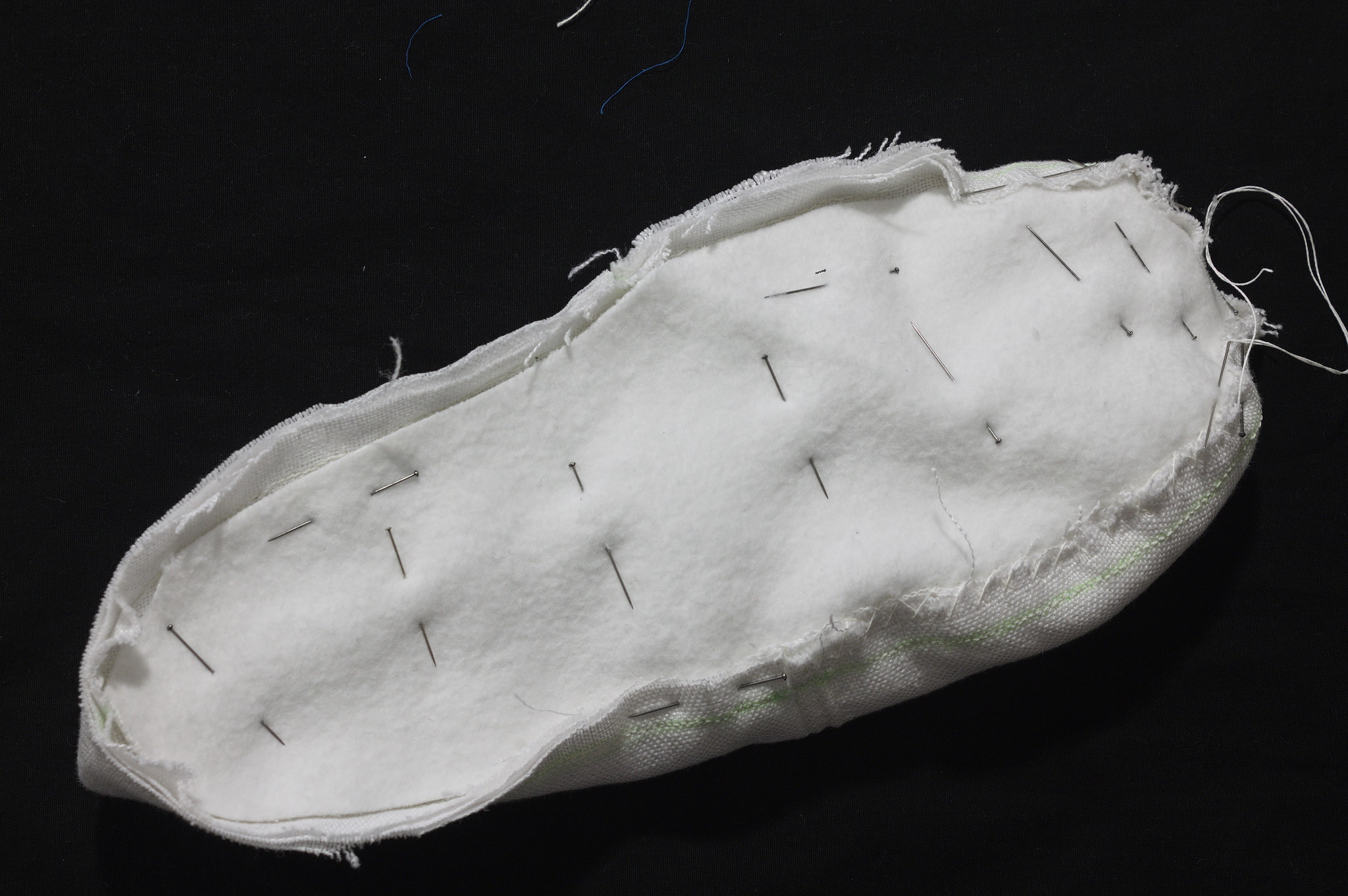
Pin the sole of the slippers on top of the padding, clip / notch the allowances and sew them to the padding with a herringbone stitch.
Note
even if sewing most of the slippers by machine you will have to do this step by hand.
Sole¶
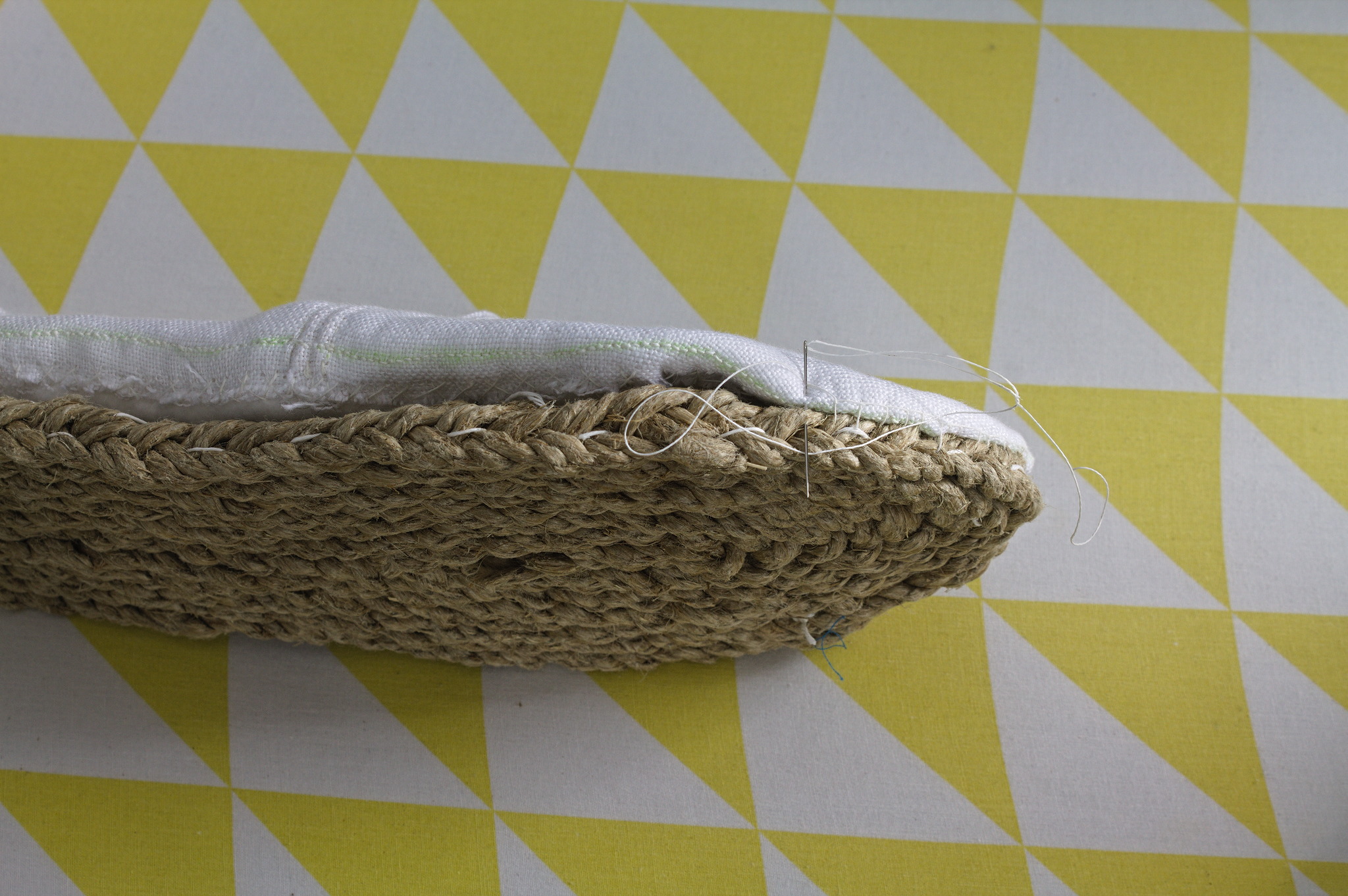
Using strong thread, sew the sole to the assembled slipper with a blanket stitch.
Note
If using rubber soles you will have to glue them to the slippers instead. Use a glue suitable for rubber and follow the instructions on the package.
Gallery¶
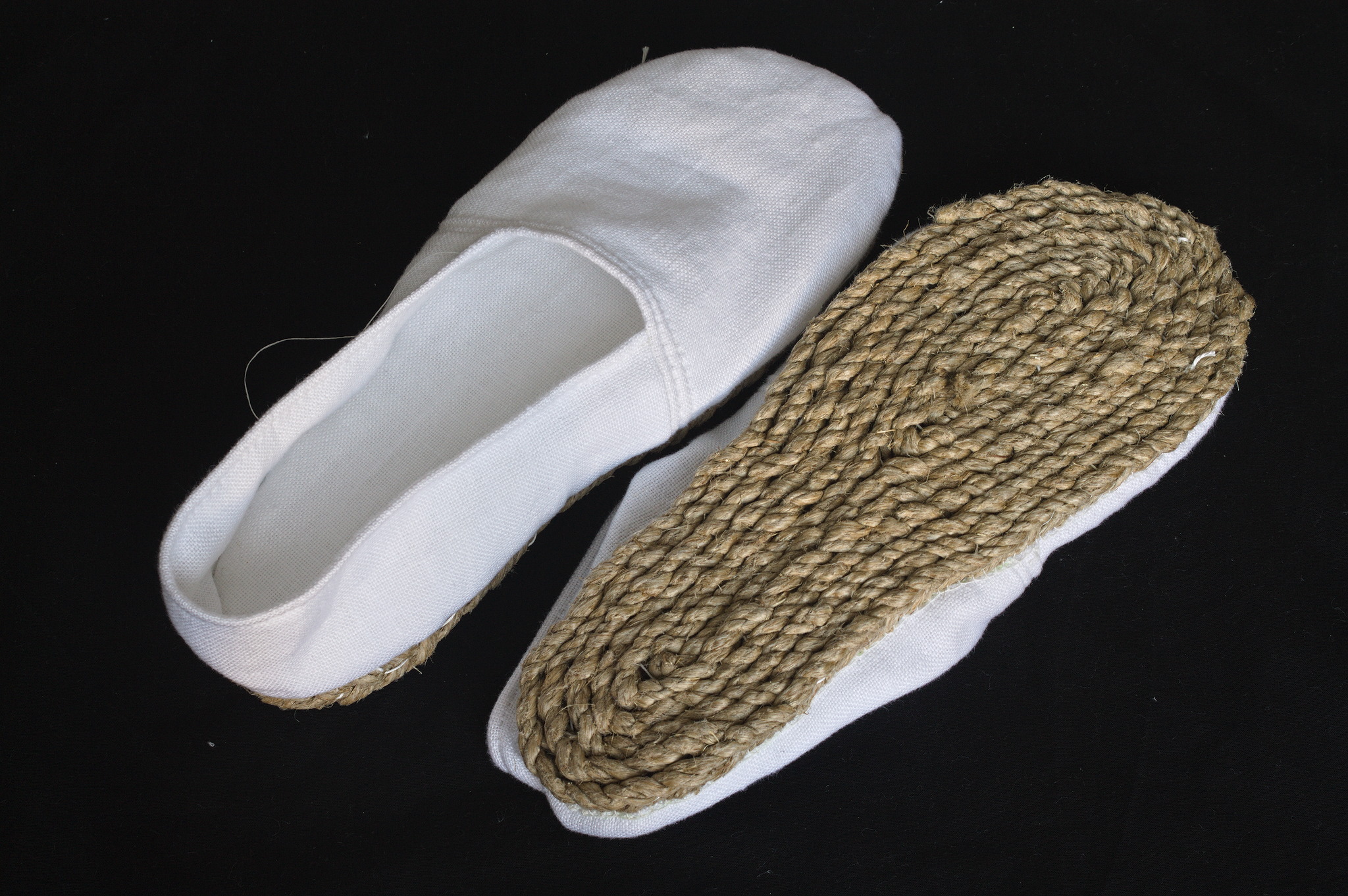
The top and sole of white linen slippers with a braided rope sole.¶
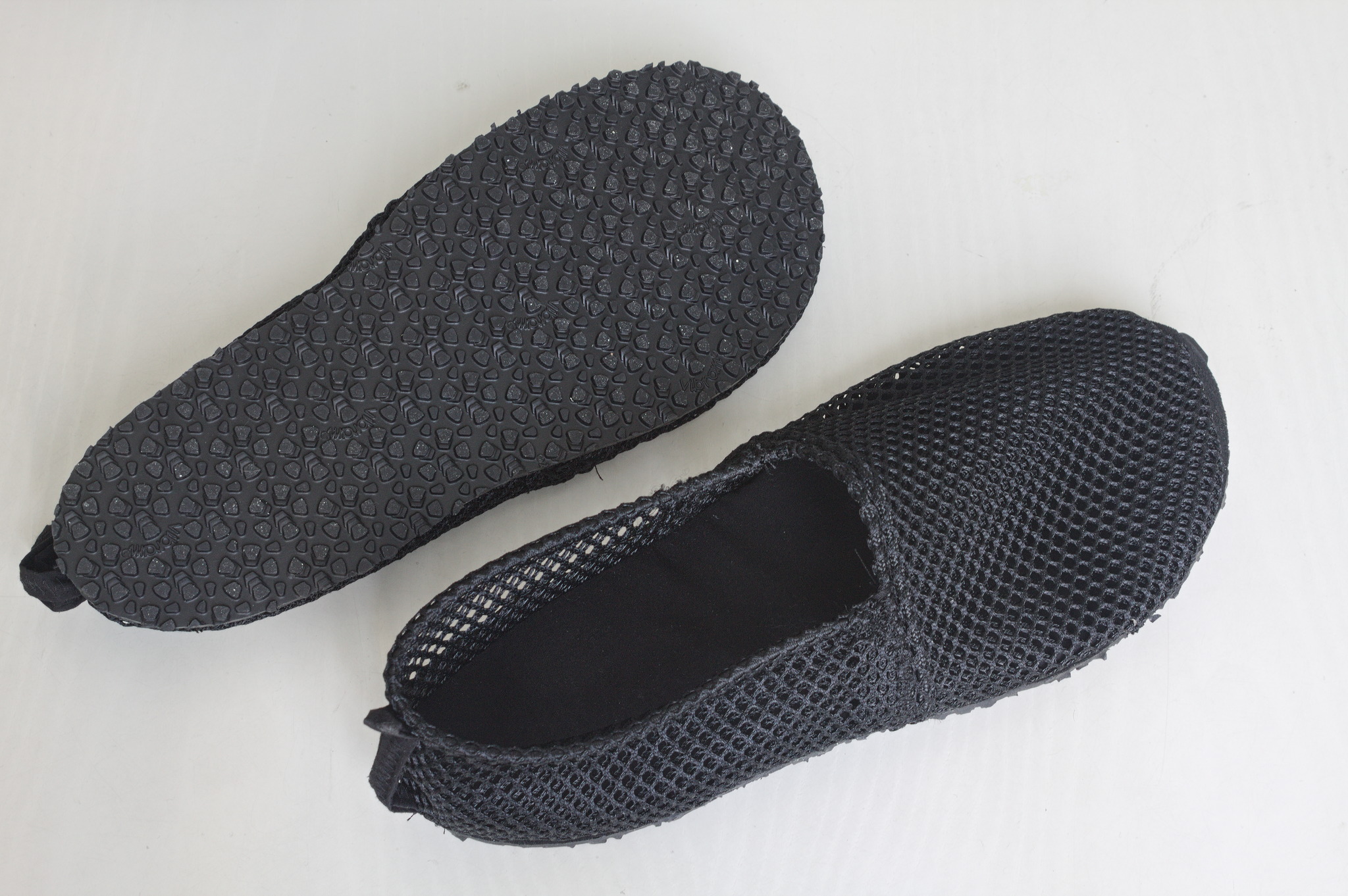
The slippers made in technical materials: elastic mesh for the uppers and back, polycotton for the soles, EVA foam for padding, round elastic in the cording and vibram claw sole.¶
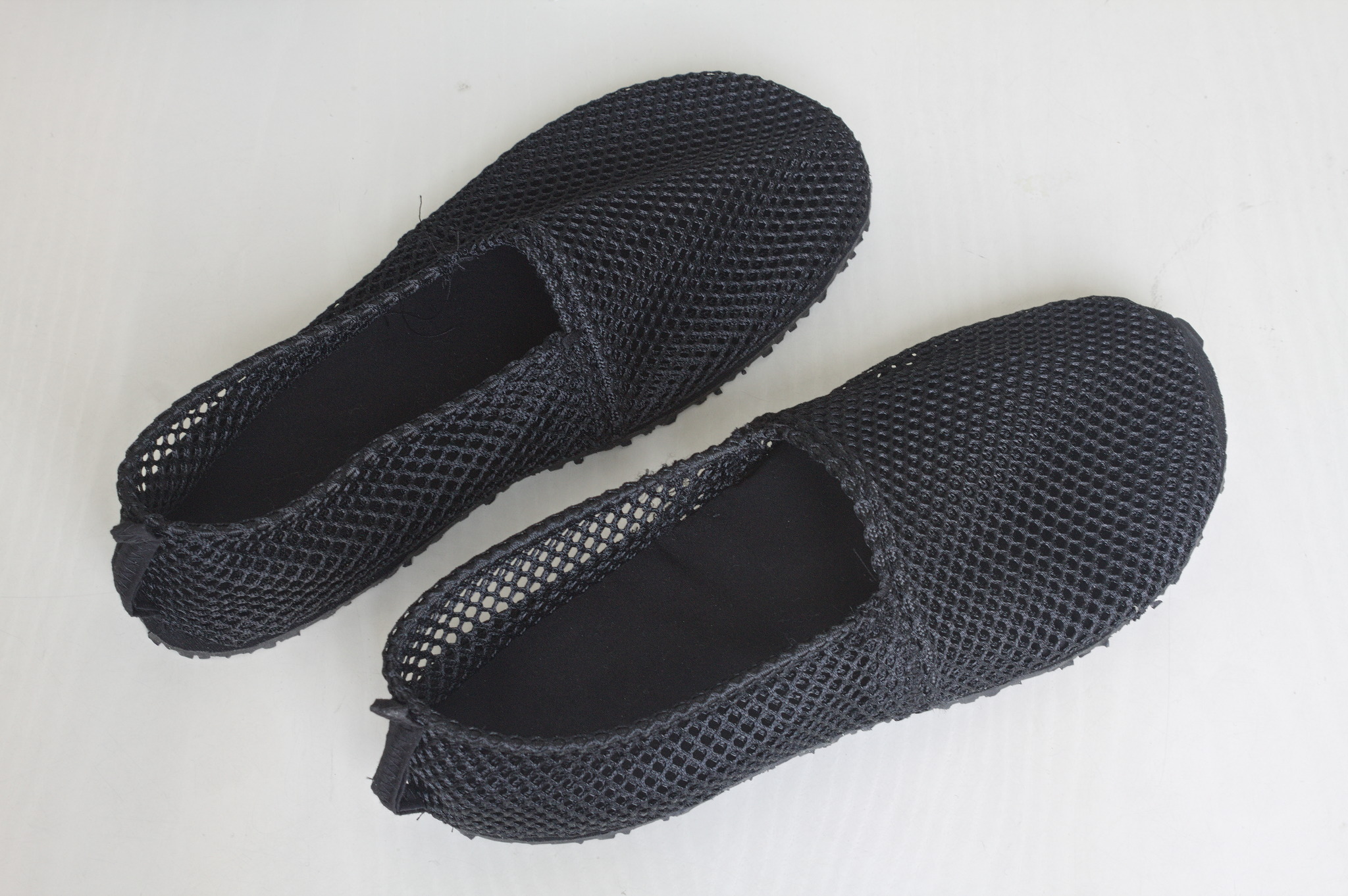
The same slippers, seen from the top.¶